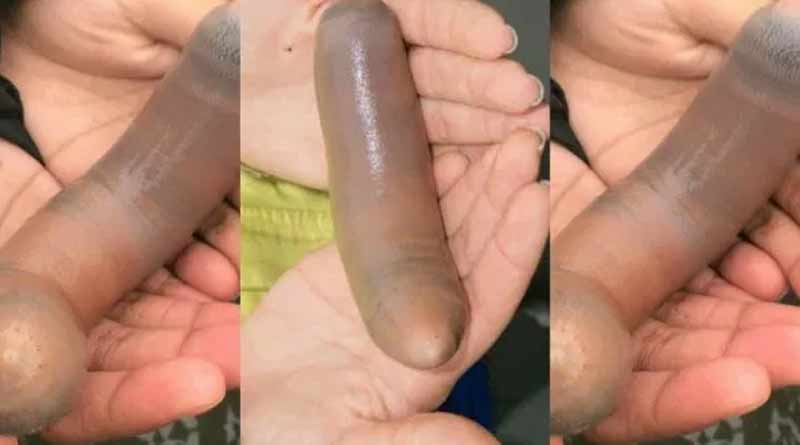
সংবাদ প্রতিদিন ডিজিটাল ডেস্ক: সমুদ্রতটের দিকে চোখ পড়তেই এ কী! নিমেষের প্রতিবর্ত ক্রিয়ায় কয়েক মুহূর্তের জন্য চোখ বন্ধ করে ফেললেন অনেকেই। ক্যালিফোর্নিয়ার সৈকত জুড়ে এত পুরুষাঙ্গ! কোথা থেকে এল, কীভাবে এল? এসব প্রশ্ন মনে আসতে আসতেই একটু এগিয়ে গিয়ে ভালভাবে দেখলেন কয়েকজন। বুঝলেন, অবিকল পুরুষাঙ্গের মতোই দেখতে কোনও সামুদ্রিক প্রাণী তট জুড়ে ছড়িয়ে আছে। কোনওটা নিথর, কোনওটা আবার ছটফট করছে। কিন্তু এমন কিছু তো এই প্রথম দেখলেন কেউ।
বিস্ময়ের ঘোর কাটতে না কাটতেই ডাক পড়ল জীববিজ্ঞানীদের। ওয়াইল্ড লাইফ সোসাইটির বিজ্ঞানী ইভান পার এসে ওই প্রাণীগুলিকে নিরীক্ষণ করেন। লম্বায় প্রায় ১০ ইঞ্চি, রং খয়েরি। তিনি সময় নিয়ে সবটা পরীক্ষা করে দেখেন। ‘বে নেচার’ পত্রিকায় প্রকাশিত তাঁর রিপোর্ট থেকে জানা গিয়েছে, প্রাণীটির নাম ফ্যাট ইনকিপার ওয়ার্মস। এরা মূলত জলজ প্রাণী। জলের অনেকটা গভীরে থাকে। ওই স্তরে থাকা নানা ব্যাকটেরিয়া, ক্ষুদ্র উদ্ভিদ এবং খনিজের উপর নির্ভর করে বেঁচে থাকে। সাধারণত একটা স্তরের উপর পর্যন্ত আসে না। তাই চোখেও পড়ে না।
সম্প্রতি ক্যালিফোর্নিয়ার উপর দিয়ে বয়ে গেছে শীতকালীন সামুদ্রিক ঘূর্ণিঝড়। যার জেরে সমুদ্রের জলে আলোড়ন পড়েছে এবং সৈকতে এসে পড়েছে জলের গভীরে থাকা প্রাণীগুলি। যা দেখতে অবিকল পুরুষাঙ্গের মতো। এবং তা অসংখ্য পরিমাণে ছড়িয়ে রয়েছে। জীববিজ্ঞানীদের একাংশের ধারণা, প্রাকৃতিক পরিবেশে এমন ব্যাপক বদলের ফলে সমুদ্রের তলদেশ থেকে বাইরে এসে পড়ে তাদের অনেকেই আর জীবিত নেই। প্রথমদিকে এই পুরুষাঙ্গ সদৃশ প্রাণী দেখে আতঙ্কিত হয়েছিলেন মানুষজন। কিন্তু পরে সবটা স্পষ্ট হওয়ায় ওই বিরল প্রাণীর মৃতদেহ হাতে তুলেও দেখেছেন অনেকে। কেউ কেউ আবার নমুনাও সংগ্রহ করে রাখলেন। একে তাঁরা বলছেন, ‘পেনিস ফিশ’। আর তার ছবি সোশ্যাল মিডিয়ায় ছড়িয়ে পড়তেই উৎসাহ বেড়েছে নেটিজেনজদের। ফলে আপাতত নেটদুনিয়ায় বেশ ভাইরাল এই পুরুষাঙ্গরূপী প্রাণী।
খবরের টাটকা আপডেট পেতে ডাউনলোড করুন সংবাদ প্রতিদিন অ্যাপ





Copyright © 2024 Pratidin Prakashani Pvt. Ltd. All rights reserved.